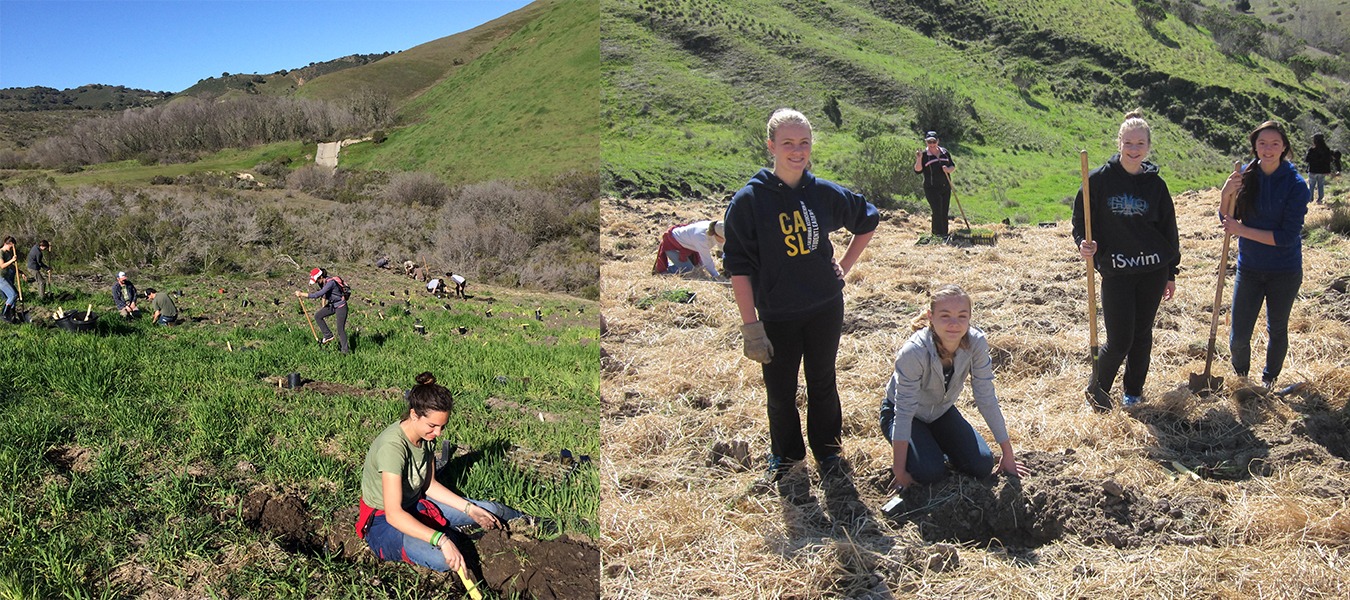Where We Work
Fort Ord National Monument

Vernal pools
About 20% of the restoration sites border and/or flow into nearby sensitive vernal pool wetland habitat. Restoration in these areas was focused on increasing native vegetative cover and decreasing surface runoff from neighboring relict dirt roads and trails.
These unique vernal pool habitats provide for numerous rare plants and animals that have adapted to seasonal cycles of inundation and evaporation. Among these species are the federally endangered California tiger salamander Ambystoma californiense. Many of these plants and animals spend the dry season as seeds, eggs, or cysts, and then grow and reproduce when the vernal pools are again filled with water. In addition, many resident and migratory birds use vernal pools as a seasonal source of food and water.
Maritime chaparral
Nearly 60% of the restoration sites reside in rare native maritime chaparral habitat. Restoration in these areas was focused on reintroducing site-specific native vegetation with an emphasis on closing biogeographic gaps in native shrub flora caused by the compacted and/or eroded soils comprising relict dirt roads.
Maritime chaparral habitat on the Fort Ord Public Lands contains an extremely diverse shrub community that is reliant on a dynamic disturbance regime to sustain the health and distribution of native flora. This unique habitat is also host to several native species of concern. Among them are:
- Sand Gilia (Gilia tenuiflora), a federally endangered species
- Monterey Spineflower (Chorizanthe pungens var. pungens), a California threatened species
- Seaside bird's-beak (Cordylanthus rigidus ssp. Littoralis), a California threatened species
- Monterey ceanothus (Ceanothus cuneatus var. rigidus ) Status: Rare
Other habitats
The remaining 20% of the restoration sites were distributed in a variety of habitats (Blue Wild Rye & Needle grass grassland, Coast Live Oak Woodlands, and Mixed Riparian Forest). These sites focused on erosion control and native plant re-vegetation following invasive species removal.